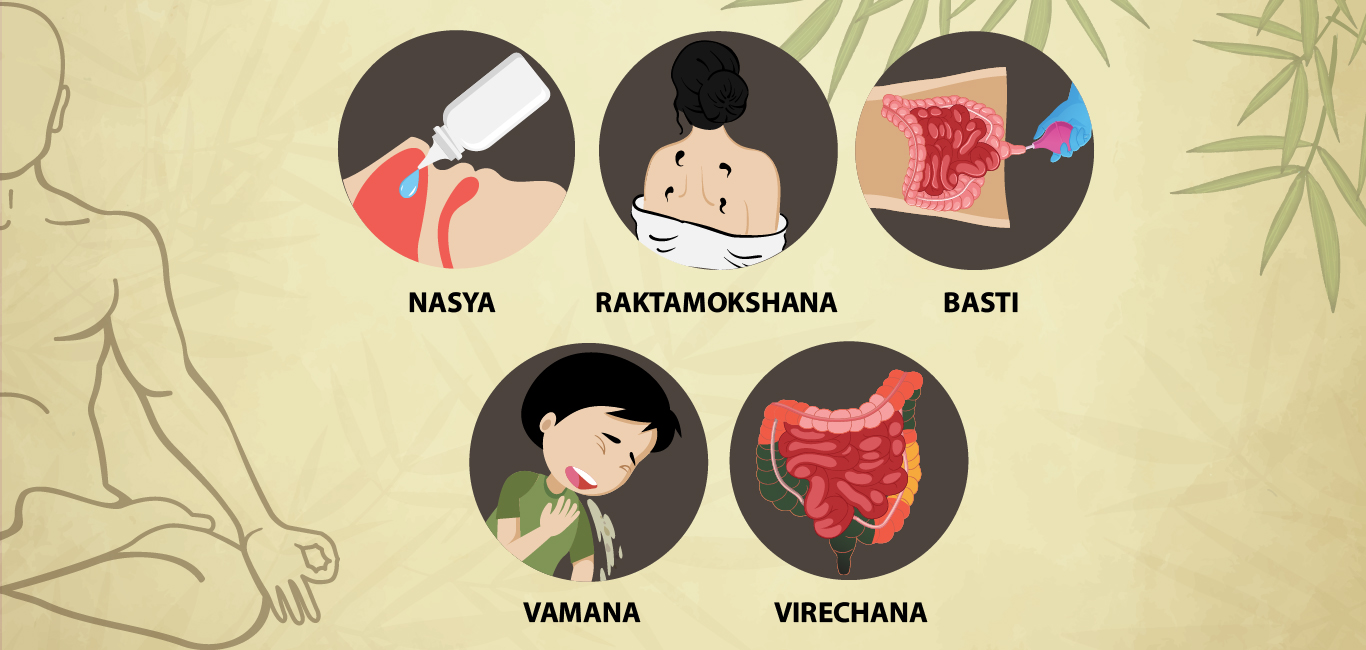

Panchakarma
Panchakarma Treatment | Purpose and Method
 Jun 14, 2024
Jun 14, 2024Introduction
Panchakarma is a comprehensive Ayurvedic treatment that involves a series of cleansing and detoxification procedures aimed at removing accumulated toxins (ama) from the body and restoring balance to the doshas (bioenergies) – Vata, Pitta, and Kapha. It is considered one of the most powerful healing modalities in Ayurveda and is typically conducted under the guidance of trained Ayurvedic practitioners. The term “Panchakarma” translates to “five actions” or “five treatments,” referring to the five main procedures involved in this treatment.

- Vamana (Therapeutic Emesis)
- Virechana (Therapeutic Purgation)
- Basti (Therapeutic Enema)
- Nasya (Nasal Administration of Medication)
- Raktamokshana (Bloodletting or Blood Purification)
Indications for Panchakarma Ayurvedic Treatment
- Chronic Health Issues: Panchakarma may be beneficial for individuals with chronic health conditions such as digestive disorders, respiratory issues, skin problems, autoimmune diseases, arthritis, and hormonal imbalances.
- Dosha Imbalance: People experiencing symptoms of dosha imbalance, such as excess Vata, Pitta, or Kapha, may benefit from Panchakarma to help restore equilibrium to their constitution.
- Toxin Accumulation: Those who have accumulated toxins in their body, which may manifest as symptoms like fatigue, sluggishness, poor digestion, skin problems, or mental fog, could benefit from Panchakarma to detoxify and rejuvenate their system.
- Preventive Care: Panchakarma is also used as a preventive measure to maintain overall health and well-being, especially during seasonal transitions or times of increased stress.
- Individuals Seeking Rejuvenation: Some individuals may seek Panchakarma for rejuvenation purposes, to enhance vitality, boost immunity, and promote longevity.
How Panchakarma Ayurvedic Treatment Works

Here’s how Panchakarma treatment generally works:
- Preparation (Purvakarma):
- Before undergoing Panchakarma treatment, the individual undergoes a preparatory phase to prepare the body for detoxification. This may involve dietary modifications, internal oleation (snehana) with medicated oils or ghee, and external oleation through massage (abhyanga).
- Detoxification (Pradhankarma):
- The main phase of Panchakarma involves the administration of the five main procedures (Vamana, Virechana, Basti, Nasya, and Raktamokshana) to eliminate toxins from the body. These procedures are selected based on the individual’s constitution, imbalances, and health concerns.
- Vamana: Therapeutic vomiting to expel toxins from the upper respiratory tract and digestive system.
- Virechana: Therapeutic purgation to cleanse the digestive tract and eliminate toxins through the stool.
- Basti: Therapeutic enema to cleanse and nourish the colon, balancing Vata dosha.
- Nasya: Nasal administration of medicated oils or herbal preparations to clear the nasal passages and balance Vata and Kapha doshas.
- Raktamokshana: Bloodletting or blood purification to remove impurities from the blood.
- The main phase of Panchakarma involves the administration of the five main procedures (Vamana, Virechana, Basti, Nasya, and Raktamokshana) to eliminate toxins from the body. These procedures are selected based on the individual’s constitution, imbalances, and health concerns.
- Rejuvenation (Paschatkarma):
- After the detoxification phase, the individual undergoes a rejuvenation process to strengthen and nourish the body’s tissues. This may involve dietary adjustments, herbal supplements, lifestyle recommendations, and specific rejuvenative therapies.
- Rejuvenative treatments may include Rasayana therapies, herbal formulations, tonics, and dietary recommendations to support overall health and vitality.
- Follow-up Care:
- Following Panchakarma treatment, individuals are typically advised to follow a post-treatment regimen to maintain the benefits achieved during the treatment. This may include dietary guidelines, lifestyle modifications, herbal supplements, and periodic detoxification practices.


